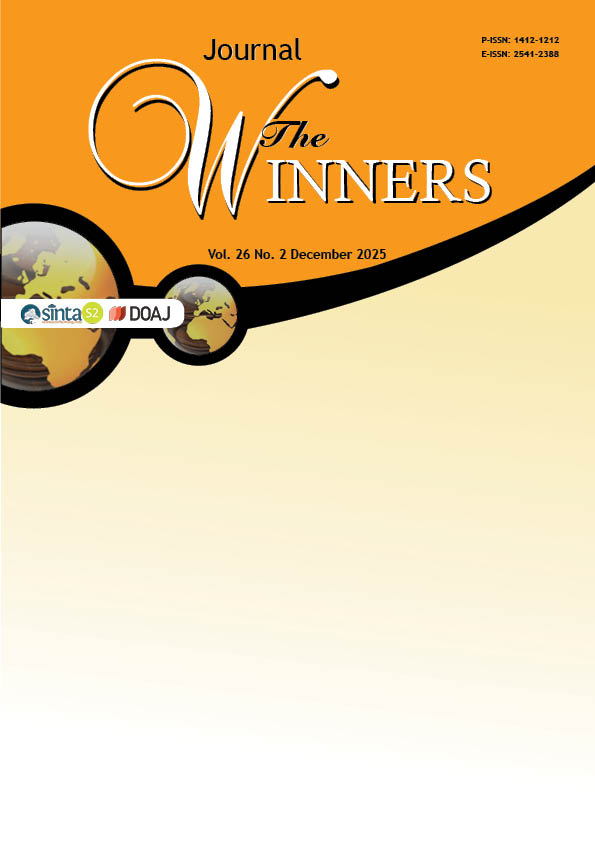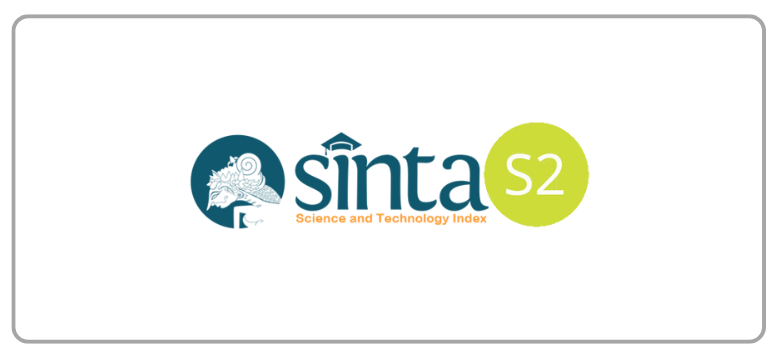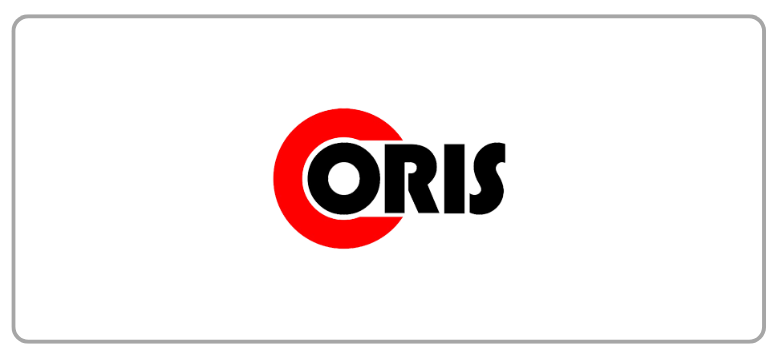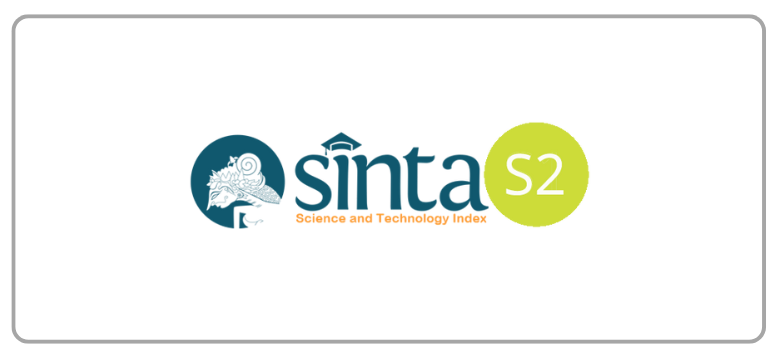The Psychology of BNPL Repayment Procrastination: Behavioral Insights on Present Bias and Financial Motivation
DOI:
https://doi.org/10.21512/tw.v26i2.13936Keywords:
Buy Now Pay Later (BNPL), financial procrastination, present bias, Temporal Motivation Theory (TMT), consumer credit behaviorAbstract
The rapid growth of Buy Now, Pay Later (BNPL) services have transformed consumer financing, particularly among younger demographics. However, concerns about repayment procrastination have been observed to persist. Unlike traditional credit systems, BNPL offers instant approval, flexible installments, and low entry barriers, creating unique behavioral dynamics that merit dedicated investigation. Therefore, this research aimed to examine BNPL repayment procrastination through the lens of Temporal Motivation Theory (TMT), focusing on three key components, namely present bias, value (reward), and delay (installment period). To achieve the research aim, survey data were collected from 134 active BNPL users in Indonesia and analyzed using Partial Least Squares Structural Equation Modeling (PLS-SEM). The obtained results show that present bias significantly increased BNPL repayment procrastination, while perceived value (reward) does not directly reduce it. Furthermore, delay (installment period) is found to positively contribute to procrastination but does not moderate the relationship between present bias and procrastination. The insignificant moderating effects of value and delay suggest that long-term BNPL users may not prioritize rewards when postponing repayments. The results also show that financially stable users with fixed incomes and short-term installment preferences are less likely to procrastinate, while those with high outstanding balances or longer installment plans face greater risks. This research extends the application of TMT in a fintech context and provides practical insights for improving BNPL risk assessments, designing repayment schemes, and promoting financial literacy.
References
Aggarwal, S., Dizon-Ross, R., & Zucker, A. D. (2020). Incentivizing behavioral change: The role of time preferences (Working Paper No. 27079). National Bureau of Economic Research. https://www.nber.org/system/files/working_papers/w27079/w27079.pdf
Akagi, Y., Marumo, N., & Kurashima, T. (2024). Analytically tractable models for decision making under present bias. Proceedings of the AAAI Conference on Artificial Intelligence, 38(9), 9441-9450. https://doi.org/10.1609/aaai.v38i9.28798
Ashby, R., Sharifi, S., Yao, J., & Ang, L. (2025). The influence of the buy-now-pay-later payment mode on consumer spending decisions. Journal of Retailing, 101(1), 103-119. https://doi.org/10.1016/J.JRETAI.2025.01.003
Askpert. (2024, August 25). BI checking to SLIK OJK: Indonesia’s financial transformation. Askpert.Id. https://askpert.id/blog/?p=68
Balakrishnan, U., Haushofer, J., & Jakiela, P. (2020). How soon is now? Evidence of present bias from convex time budget experiments. Experimental Economics, 23(2), 294-321. https://doi.org/10.1007/s10683-019-09617-y
Balza, J. S., Cusatis, R., McDonnell, S. M., Basir, M. A., & Flynn, K. E. (2022). Effective questionnaire design: How to use cognitive interviews to refine questionnaire items. Journal of Neonatal-Perinatal Medicine, 15(2), 345-349. https://doi.org/10.3233/NPM-210848
Barboza, G. (2017). I will pay tomorrow, or maybe the day after. credit card repayment, present biased and procrastination: Credit card repayment, present biased and procrastination. Economic Notes, 47(2-3), 455-494. https://doi.org/10.1111/ecno.12106
Bisin, A., & Hyndman, K. (2020). Present-bias, procrastination and deadlines in a field experiment. Games and Economic Behavior, 119, 339-357. https://doi.org/10.1016/J.GEB.2019.11.010
Chebolu, S., & Dayan, P. (2024). Optimal and sub-optimal temporal decisions can explain procrastination in a real-world task. Proceedings of the Annual Meeting of the Cognitive Science Society, 46, 3102-3108.
Chen, C., Li, C., & Ren, G. (2020). The effect of present‐biased preferences on revolving debts: Evidence from urban households in China. International Journal of Finance & Economics, 27, 2653-2668. https://doi.org/10.1002/ijfe.2292
deHaan, E., Kim, J., Lourie, B., & Zhu, C. (2024). Buy Now Pay (Pain?) Later. Management Science, 70(8), 5586-5598. https://doi.org/10.1287/mnsc.2022.03266
Diamantopoulos, A., Sarstedt, M., Fuchs, C., Wilczynski, P., & Kaiser, S. (2012). Guidelines for choosing between multi-item and single-item scales for construct measurement: A predictive validity perspective. Journal of the Academy of Marketing Science, 40(3), 434-449. https://doi.org/10.1007/s11747-011-0300-3
Direr, A. (2020). Bringing present bias back to the present. https://www.alexisdirer.net/paper/axiom_PB_11.pdf
Fomin, F. V., Fraigniaud, P., & Golovach, P. A. (2022). Present-biased optimization. Mathematical Social Sciences, 119, 56-67. https://doi.org/10.1016/j.mathsocsci.2022.06.001
Gómez, L., Schalock, R., & Verdugo, M. (2020). The role of moderators and mediators in implementing and evaluating intellectual and developmental disabilities-related policies and practices. Journal of Developmental and Physical Disabilities, 32, 375-393. https://doi.org/10.1007/s10882-019-09702-3
Hair, J. F., Hult, G. T. M., Ringle, C. M., & Sarstedt, M. (2021). A Primer on partial least squares structural equation modeling (PLS-SEM) (3rd Ed.). Sage Publishing.
Halim, N. A., Salleh, S. M., Mustapa, S. N. S., Rozali, N., & Khairi, S. M. M. (2024). From instant gratification to long-term consequences: How buy now, pay later influences consumer behavior and financial stability. International Journal of Research and Innovation in Social Science (IJRISS), 8(09), 403-411.. https://doi.org/10.47772/IJRISS.2024.809035
Hendy, P., Slonim, R., & Atalay, K. (2020). Prize Linked debt: Increasing credit card repayments in an online experiment (Life Course Centre Working Paper No. 2020-09). https://www.lifecoursecentre.org.au/wp-content/uploads/2020/04/2020-09-LCC-Working-Paper-Hendy-et-al..pdf
Hidayat, M. A. (2022). The analysis of the “Buy Now, Pay Later” use intention in Indonesia. International Journal of Current Science Research and Review, 5(7), 2384-2388 . https://doi.org/10.47191/ijcsrr/v5-i7-19
Holbert, R., Song, H., Ellithorpe, M., Lamarre, H., Baik, E., & Tolan, C. (2023). Pulling the field out of a “One Variable, One Role” mindset: Maximizing the theoretical value of interaction terms in communication’s mediation models. Human Communication Research, 50(2), 240-253. https://doi.org/10.1093/hcr/hqad046
Isaac, J. (2025, January 8). Indonesians’ paylater debts soar, driving BNPL growth and rising loan defaults. Indonesia Business Post. https://indonesiabusinesspost.com/3496/investment-and-risk/indonesians-paylater-debts-soar-driving-bnpl-growth-and-rising-loan-defaults
Jamil, R. A., Qayyum, A., Ahmad, Z., & Shah, A. M. (2024). Investigating the determinants of consumer confidence and online impulse buying intentions: An experimental study. Asia-Pacific Journal of Business Administration, 17(3), 696-716. https://doi.org/10.1108/apjba-06-2024-0325
Khan, H., Sultana, R., & Hayat, M. (2024). Rethinking credit cards, transforming debt dynamics, and revolutionizing interest impacts in contemporary society. EPRA International Journal of Economics, Business and Management Studies,11(5). https://doi.org/https://doi.org/10.36713/epra16563
Knowles, S., Servátka, M., Sullivan, T., & Genc, M. (2021). Procrastination and the non‐monotonic effect of deadlines on task completion. Economic Inquiry, 60(2), 706-720. https://doi.org/10.1111/ecin.13042
Kuchler, T., & Pagel, M. (2021). Sticking to your plan: The role of present bias for credit card paydown. Journal of Financial Economics, 139(2), 359-388. https://doi.org/10.1016/J.JFINECO.2020.08.002
Kuramoto, Y., Takeuchi, K., Nabeshima, H., Nakamichi, S., Khan, M. S. R., & Kadoya, Y. (2024). Temporal dynamics of payment choices: Unraveling the interplay between time preferences and credit card utilization in Japan. Cogent Economics and Finance, 12(1). https://doi.org/10.1080/23322039.2024.2369278
Le Bouc, R., & Pessiglione, M. (2022). A neuro-computational account of procrastination behavior. Nature Communications, 13(1), 5639. https://doi.org/10.1038/s41467-022-33119-w
Ma, H., Ma, Q., Ma, Z., & Song, M. (2024). Exploring the complex interplay of procrastination between biological, cognitive, developmental, social, and psychological factors. Journal of Education, Humanities and Social Sciences, 26, 1054-1057.
Maesen, S., & Ang, D. (2024). Buy now, pay later: Impact of installment payments on customer purchases. Journal of Marketing, 89(3), 13-35. https://doi.org/10.1177/00222429241282414
Mahardika, Z. (2025). Indonesia’s electronic money landscape: between effectivity and inclusivity. Journal of Central Banking Law and Institutions, 4(1), 1-22. https://doi.org/10.21098/jcli.v4i1.253
Maji, S. K., & Prasad, S. (2025). Present bias and its influence on financial behaviours amongst Indians. IIM Ranchi Journal of Management Studies, 4(1), 17-30. https://doi.org/10.1108/IRJMS-02-2024-0009
Mamun, M. Z. A., & Khan, M. Y. H. (2020). A theoretical study on factors influencing employees performance, rewards and motivation within organisation. SocioEconomic Challenges, 4(3), 113-124. https://doi.org/10.21272/sec.4(3).113-124.2020
Maurizka, S., Handayani, P. W., & Pinem, A. A. (2021). The acceptance of pay later payment usage on business-to-consumer online marketplace in Indonesia. 2021 International Conference on Informatics, Multimedia, Cyber and Information System (ICIMCIS), 187-192. https://doi.org/10.1109/ICIMCIS53775.2021.9699127
Muhamad, N. (2023, October 25). 8 Layanan paylater terpopuler di Indonesia, Shopee paylater juara. Databoks. https://databoks.katadata.co.id/keuangan/statistik/1c97d81669f0cb7/8-layanan-paylater-terpopuler-di-indonesia-shopee-paylater-juara
Muhamad, N. (2024, July 4). Milenial dan Gen Z mendominasi pengguna paylater di Indonesia. Databoks. https://databoks.katadata.co.id/demografi/statistik/66b5d6e18dff3/milenial-dan-gen-z-mendominasi-pengguna-paylater-di-indonesia
Munir, S., & Krowin, M. (2024). Sistem reward dan punishment sebagai pemicu dalam meningkatkan kinerja karyawan. Prosiding Seminar Nasional Forum Manajemen Indonesia, 2, 5-7. https://doi.org/10.47747/snfmi.v2i1.2426
Muthia, R. (2022, June 22). In Indonesia, ‘pay later’ services leave some drowning in debt. Aljazeera. https://www.aljazeera.com/economy/2022/6/28/for-indonesias-poor-pay-later-services-exact-heavy-price
Newswire, G. (2025, February 17). Indonesia buy now pay later business report 2025: BNPL market to reach 13.59 billion by 2030, driven by surge in mobile-first consumers, and partnerships between fintech providers and e-comm platforms. Fintech Futures. https://www.fintechfutures.com/press-releases/indonesia-buy-now-pay-later-business-report-2025-bnpl-market-to-reach-13-59-billion-by-2030-driven-by-surge-in-mobile-first-consumers-and-partnerships-between-fintech-providers-and-e-comm-platforms
O’Brien, L., Ramsay, I., & Ali, P. (2024). Innovation, disruption and consumer harm in the buy now pay later industry: An empirical study. University of New South Wales Law Journal, 47. https://doi.org/10.53637/ZXAN7475
OJK. (2024a, August 8). Siaran pers: OJK terbitkan aturan baru pelaporan dan permintaan informasi debitur melalui sistem layanan informasi keuangan (SLIK). OJK. https://ojk.go.id/id/berita-dan-kegiatan/siaran-pers/Pages/OJK-Terbitkan-Aturan-Baru-Pelaporan-dan-Permintaan-Informasi-Debitur-Melalui-Sistem-Layanan-Informasi-Keuangan-SLIK.aspx
OJK. (2024b, December 31). Siaran Pers: Penyesuaian Batasan Manfaat Ekonomi Serta Penguatan Pengaturan Pinjaman Daring dan Skema Buy Now Pay Later Bagi Perusahaan Pembiayaan. OJK. https://www.ojk.go.id/id/berita-dan-kegiatan/siaran-pers/Pages/LPBBTI-dan-BNPL.aspx
OJK. (2025, January 7). Siaran pers: Pengembangan dan penguatan sektor jasa keuangan untuk sektor jasa keuangan yang stabil dan berdaya tahan. OJK. https://www.ojk.go.id/id/berita-dan-kegiatan/siaran-pers/Pages/RDKB-Desember-2024.aspx
Reddinger, J. L. (2024). Temptation: Immediacy and certainty. https://doi.org/10.48550/arXiv.2407.14955
Sanjeev. (2024, October). Indonesia buy now pay later (BNPL) market outlook to 2030. https://www.kenresearch.com/industry-reports/indonesia-buy-now-pay-later-bnpl-market
Shin, F., Cohen, D., Lawless, R. M., & Preston, J. L. (2020). The hedonics of debt. Frontiers in Psychology, 11, 537606. https://doi.org/10.3389/FPSYG.2020.537606
Sriyono, S., Andjani, S., & Irawan, M. F. (2023). Evaluation of Fintech’s impact on financial inclusion in Indonesia: A case research on the use of digital payment services. The Management Journal of Binaniaga, 8(2), 91-102. https://doi.org/10.33062/mjb.v8i2.32
Steel, P. (2010). Arousal, avoidant and decisional procrastinators: Do they exist? Personality and Individual Differences, 48(8), 926-934. https://doi.org/10.1016/J.PAID.2010.02.025
Steel, P., & König, C. J. (2006). Integrating theories of motivation. Academy of Management Review, 31(4). https://doi.org/10.5465/AMR.2006.22527462
Steel, P., Svartdal, F., Thundiyil, T., & Brothen, T. (2018). Examining procrastination across multiple goal stages: A longitudinal study of temporal motivation theory. Frontiers in Psychology, 9. https://doi.org/10.3389/fpsyg.2018.00327
Van den Berg, I., Franken, I. H. A., & Muris, P. (2010). A new scale for measuring reward responsiveness. Frontiers in Psychology, 1, 239. https://doi.org/10.3389/fpsyg.2010.00239
Wiwatowska, E., Prost, M., Coll-Martin, T., & Lupiáñez, J. (2024). Can poor control over thoughts and emotions contribute to higher tendency to delay tasks? Exploring the link between procrastination, emotional dysregulation and attentional control. SSRN. http://dx.doi.org/10.2139/ssrn.4702990
Wolf, C., & Lappe, M. (2023). Motivation by reward jointly improves speed and accuracy, whereas task-relevance and meaningful images do not. Attention, Perception, and Psychophysics, 85(3), 930-948. https://doi.org/10.3758/s13414-022-02587-z
Xiao, J. J., & Porto, N. (2018). Present bias and financial behavior. http://dx.doi.org/10.2139/ssrn.3257093
Zhang, P. Y., & Ma, W. J. (2024). Temporal discounting predicts procrastination in the real world. Scientific Reports, 14(1). https://doi.org/10.1038/s41598-024-65110-4
Zhang, S., & Feng, T. (2020). Modeling procrastination: Asymmetric decisions to act between the present and the future. Journal of Experimental Psychology: General, 149(2), 311-322. https://doi.org/10.1037/xge0000643
Zuber, S., Cauvin, S., Haas, M., Daviet, A.-S., Da Silva Coelho, C., & Kliegel, M. (2020). Do self-reports of procrastination predict actual behavior? International Journal of Methods in Psychiatric Research, 29(4), 1-6. https://doi.org/10.1002/mpr.1843
Downloads
Published
How to Cite
Issue
Section
License
Copyright (c) 2025 Marisa Lie, Bani Sahda Putra, Jimmy Sammuel Sulu, Miranda Tanjung

This work is licensed under a Creative Commons Attribution-ShareAlike 4.0 International License.
Authors who publish with this journal agree to the following terms:
a. Authors retain copyright and grant the journal right of first publication with the work simultaneously licensed under a Creative Commons Attribution License - Share Alike that allows others to share the work with an acknowledgment of the work's authorship and initial publication in this journal.
b. Authors are able to enter into separate, additional contractual arrangements for the non-exclusive distribution of the journal's published version of the work (e.g., post it to an institutional repository or publish it in a book), with an acknowledgment of its initial publication in this journal.
c. Authors are permitted and encouraged to post their work online (e.g., in institutional repositories or on their website) prior to and during the submission process, as it can lead to productive exchanges, as well as earlier and greater citation of published work.
USER RIGHTS
All articles published Open Access will be immediately and permanently free for everyone to read and download. We are continuously working with our author communities to select the best choice of license options, currently being defined for this journal as follows: Creative Commons Attribution-Share Alike (CC BY-SA)

















